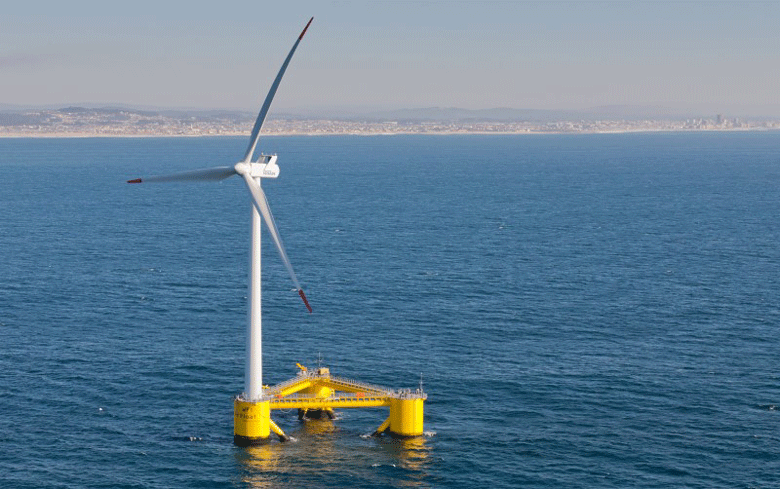Earlier this year, Gov. Janet Mills announced her terms for the back-in-motion effort to site wind turbines in the Gulf of Maine. She is asking the legislature to back a ten-year moratorium on wind projects in the waters managed by the state—those within three miles of shore—and she affirmed her support for development of floating wind turbines in the offshore waters managed by the federal government.
Embedded in the dual announcement was Mills’ pledge to keep the fishing industry engaged in decision making, promising to open “channels and opportunities for meaningful input from fishermen and marine industries in siting the proposed research array,” according to a press release issued by the governor’s office
The release explained the governor’s thinking on the issue.
“Offshore winds are typically strongest during the day, which is good for when we’re using our energy.”
—Dan Burgess
“These actions seek to protect fishing and recreational opportunities within the three miles of coastal waters managed by the state, which are more heavily fished than federal waters. The actions also allow for additional substantive input from the fishing industry as Maine continues to pursue the nation’s first floating offshore wind research array in the Gulf of Maine and its associated economic and energy benefits.”
An overview of the revived offshore wind initiative was the subject of presentation on Feb. 12 by the Maine Conservation Voters group. Dan Burgess, director of the Governor’s Energy Office and Celina Cunningham, deputy director, presented the timeline that led to current efforts.
In December, the state climate council delivered its action plan, which calls for Maine achieving carbon neutrality by 2045, cutting greenhouse gas emissions by 45 percent below 1990 levels by 2030, and 80 percent below 1990 levels by 2050.
“Twenty years ago, we were using 35 percent coal and oil for our electricity,” Burgess said. Now, it’s less than 1 percent and, depending on weather, it often is lower.
As the state turns to wind as a renewable, non-polluting source, Burgess said, the Gulf of Maine was investigated as a resource. Because of depths, floating turbines made sense. Undersea cables link the electricity to the grid.
“Offshore winds are typically strongest during the day, which is good for when we’re using our energy,” he said, and it is higher in winter, when more electricity is used. The resource also is close to population centers, and it is being embraced in places beyond Maine.
“The United Kingdom has a target to have all their energy come from offshore wind by 2030,” Burgess said. “From Europe to Asia, we’re seeing rapid development.” Seven turbines are now operating off the Northeast—seven off Rhode Island, two off Virginia. Turbines that would produce some 30,000 megawatts in the Northeast are being planned.
Last March, Mills directed an inquiry into how the port of Searsport might be used to assemble floating turbines.
Since conflicts over use are inevitable, the energy office is working with ocean stakeholders, especially the fishing industry, whose 2019 landing were valued at $674 million.
As part of siting wind turbines, the federal Bureau of Ocean Energy Management created a task force to oversee the process and is committed to including other users of the ocean.
Cunningham presented a timeline that showed a research array of 12 or fewer turbines over 16 square miles being established by about 2025. The connection to the grid is likely to be through either Wyman Station in Yarmouth or Maine Yankee in Wiscasset.
Applications for the project are anticipated to be submitted to the federal government later this year, she said.
“We understand that while there are some who see a lot of opportunity from offshore wind, others are concerned. And our fishing industry obviously is an incredibly important economic and cultural contributor to our state,” she said.
The ten-year moratorium on wind turbines in state waters came from the governor’s concerns about impacts to the fishing industry, Cunningham said.
In the governor’s announcement, Department of Marine Resources Commission Patrick Keliher was quoted saying the moratorium “will give us an opportunity to have a more focused conversation around the proposed research array. We will continue to work to see that all stakeholders are afforded the opportunity to have a voice in the decision-making process.”
Among the questions expected to be answered are whether fishing activity is possible near or between the turbines, Cunningham said.





